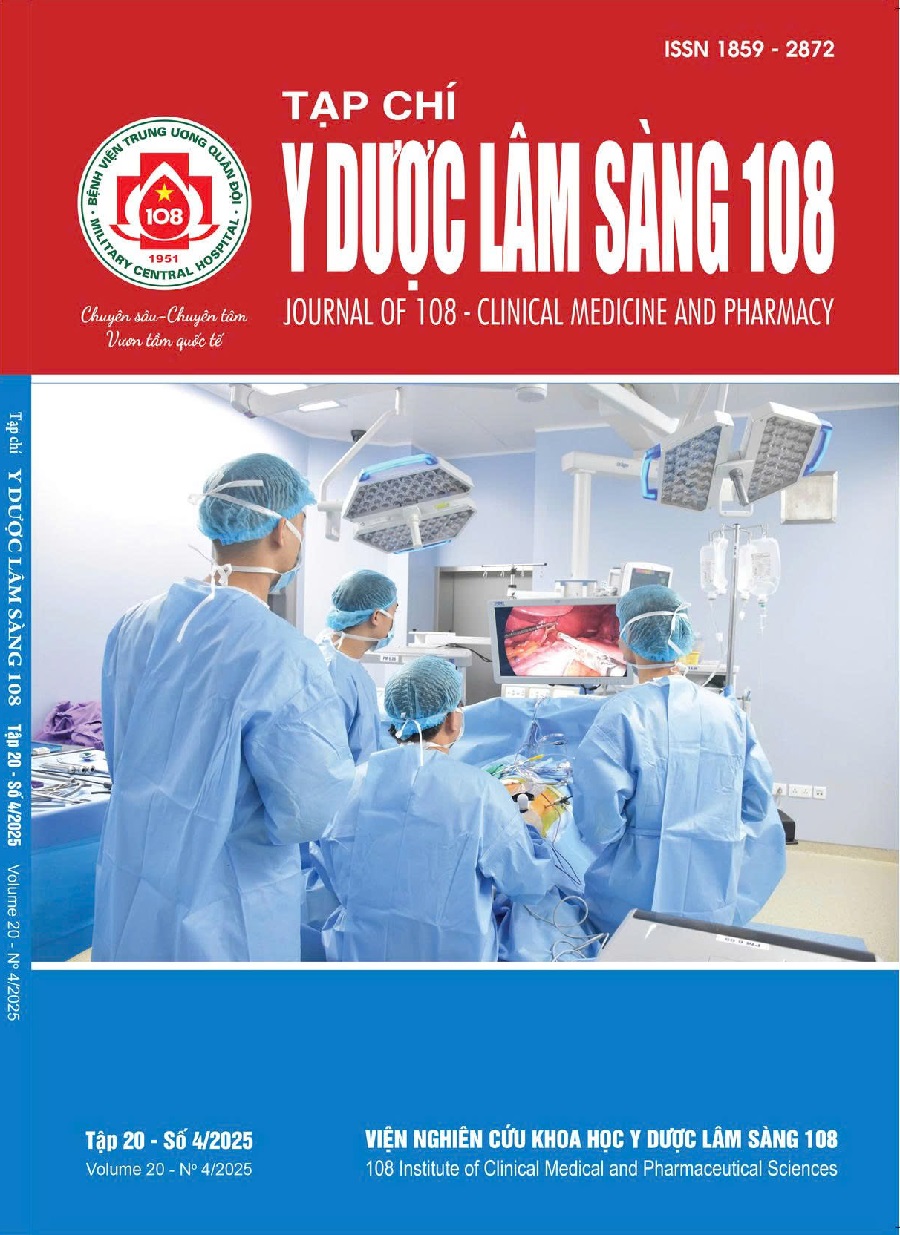Short-term clinical outcomes of endovascular intervention in patients with lower extremity arterial disease with iliac artery lesions at 108 Central Military Hospital
Main Article Content
Keywords
Abstract
Objective: To evaluate the efficacy, results of endovascular intervention in patients with chronic iliac artery lesions. Subject and method: 150 patients with chronic iliac artery lesions treated who were treated at the 108 Hospital from March 2020 to September 2023. Methods: A descriptive and cross-sectional study, follow-up 1 months. Result: Technical successsful rate was 98.9%; Clinical success rate was 92.5%; Dynamic success rate was 86,1%. The ABI improved soon after the procedure, pre-procedure ABI: 0.43 ± 0.21, post-procedure ABI: 0.67 ± 0.13, 1 month ABI: 0.72 ± 0.18. The complications included: Hematoma (3.7%), Arterio-Venous Fistulas (1.6%), Acute Renal Failure (0.5%), Acute Thrombosis (1.6%). Conclusion: Endovascular Intervention was effective, safe treatment for patients with lower extremity arterial disease with iliac artery lesions.
Article Details
References
2. Lê Thế Anh, Phạm Thái Giang, Lê Văn Trường (2022) Đánh giá kết quả sớm của phương pháp can thiệp nội mạch điều trị bệnh hẹp tắc động mạch chậu mạn tính. Tạp chí Y dược lâm sàng 108, tập 17, số 5 (2022), tr. 7-12.
3. Christopher D Leville (2006) Endovascular management of iliac artery occlusions: Extending treatment to TransAtlantic Inter-Society Consensus class C and D patients. J Vasc Surg 4(3): 2-9.
4. Ichihashi S, Higashiura W et al (2011) Long-term outcomes for systematic primary stent placement in complex iliac artery occlusive disease classified according to Trans-Atlantic Inter-Society Consensus (TASC)-II. J Vasc Surg 53(4): 992-999. doi: 10.1016/j.jvs.2010.10.069.
5. Hausegger (2010) Iliac artery stenting - clinical experience with the palmaz stent, wallstent, and strecker stent. Acta Radiologica 33(4): 292-296.
6. Gerhard-Herman et al (2017) 2016 AHA/ACC Guideline on the Management of Patients With Lower Extremity Peripheral Artery Disease: Executive Summary: A Report of the American College of Cardiology/American Heart Association Task Force on Clinical Practice Guidelines. Circulation 135(12): 686-725.
7. Stoner MC (2016) Reporting standards of the Society for Vascular Surgery for endovascular treatment of chronic lower extremity peripheral artery disease. J Vasc Endovasc Surg 64(1): 1-21.
8. Ozkan U, Oguzkurt L, Tercan F (2010) Technique, complication, and long-term outcome for endovascular treatment of iliac artery occlusion. Cardiovasc Intervent Radiol 33(1): 18-24. doi: 10.1007/s00270-009-9691-7.
9. Tamer EA et al (2020) Role of endovascular Intervention in Iliac artery disease TASC C and D classification. Med. J. Cairo Univ 88(2): 541-548.
10. Aboyans V, Ricco JB, et al (2018) 2017 ESC Guidelines on the Diagnosis and Treatment of Peripheral Arterial Diseases, in collaboration with the European Society for Vascular Surgery. Eur Heart J 39(9):763-816. doi: 10.1093/eurheartj/ehx095.
 ISSN: 1859 - 2872
ISSN: 1859 - 2872
